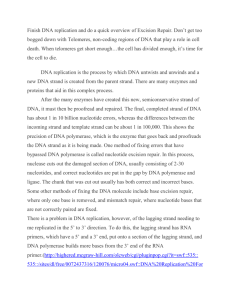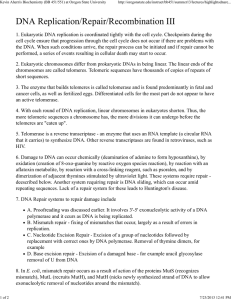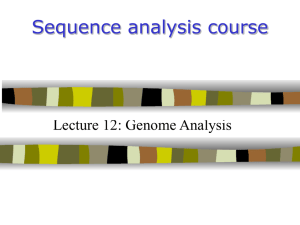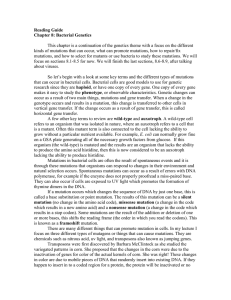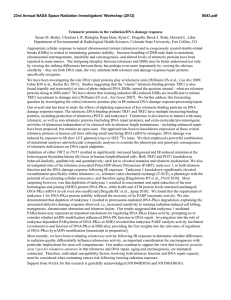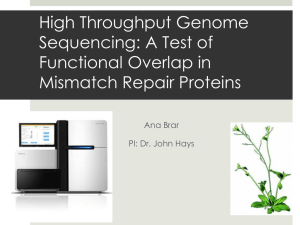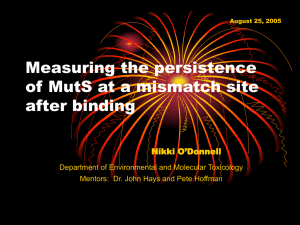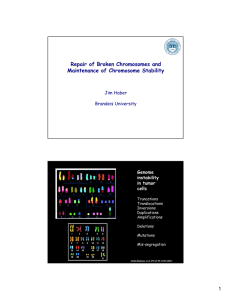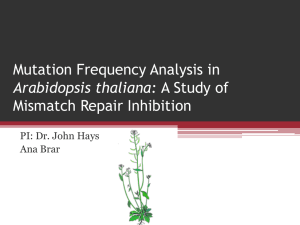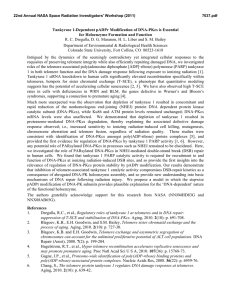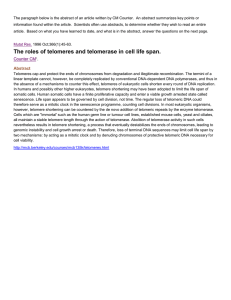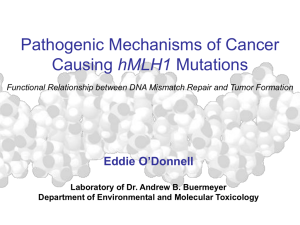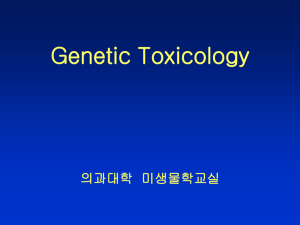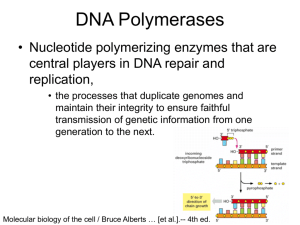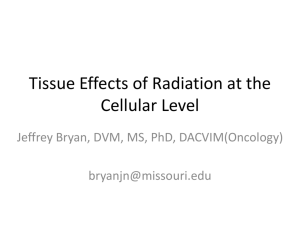Mutations in Replication
advertisement
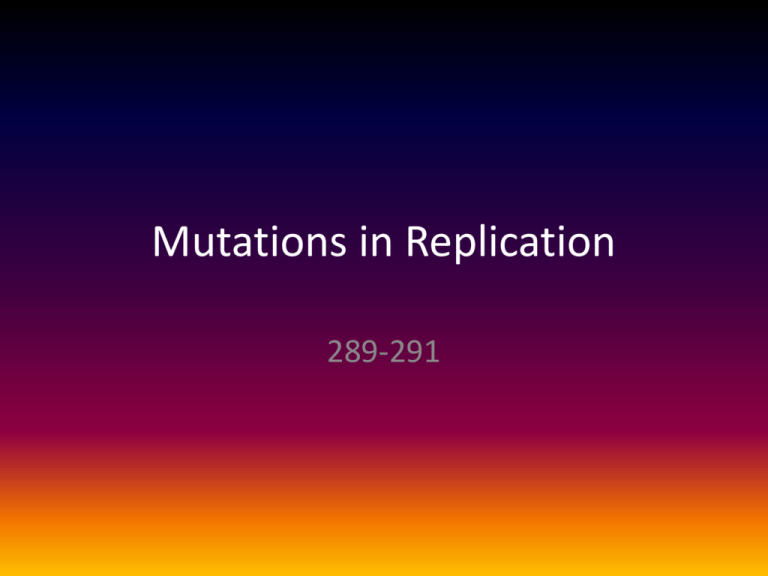
Mutations in Replication 289-291 What did you learn in your reading? • Who performs mismatch repair? • Why does DNA constantly have to be maintained? • What is excision repair? • What is the end-replication problem? • Who fixes it? Randoms… • Haploid cell (sperm/egg) have about 3 billion base pairs • Approximately 100-200 million base pairs per chromosome • Initial pairing errors are 1 in 10,000 • At the end of the completed strand, only 1 in 1 billion have errors • There are 2 types of repair… Mismatch Repair vs Damage Repair • DNA polymerase proofreads and fixes mistakes before the strand is complete • Many other proteins also perform mismatch repair • Reactive chemicals, radioactive emissions, X-rays, and UV rays are constantly (potentially) harming DNA • Cell continuously monitors and repairs Excision Repair • Nuclease: cuts damaged portion • DNA polymerase adds new nucleotides • Ligase seals DNA back up Xeroderma pigmentosum • Disorder in the excision-repair enzyme • Skin cells mutations are not corrected after UV damage Replication Problem • DNA polymerase can only add nucleotides to the 3’ end of a preexisting polynucleotide • So….. Where primer is removed a gap remains unfilled • If it would stay this way, each new cell would be shorter and shorter until no DNA would remain • **Only a problem in eukaryotes…why?? Telomeres and Telomerase • Telomere: special nucleotide sequence at ends of DNA – TTAGGG is typical human repeating telomere • Telomerase: enzyme that catalyzes the lengthening of telomeres with the help of RNA strand • Job of telomere: – Protect the genes from being eroded from generation to generation of replication – Prevent the ends from activating cell death (unnecessarily) Telomerase • http://highered.mcgrawhill.com/sites/dl/free/0072835125/126997/an imation19.html Telomeres and Aging • http://player.discoveryeducation.com/index.cf m?guidAssetId=AB274EB9-EDF1-40F0-91225B996E8E08E0&blnFromSearch=1&productco de=US Sickle Cell and Malaria • http://www.pbs.org/wgbh/evolution/library/01/ 2/quicktime/l_012_02.html • How can a mutation be harmful in one environment and helpful in another? • Why should a mutation persist if it kills people? • Why are there more people with sickle cell disease in one part of the world than in other parts? Cracking the Code • http://video.pbs.org/video/1841308959/ • 15:27 (time to start clip) • How can a mutation in a single DNA base affect the production of normal proteins? • How are mutations passed on to offspring? • What does it mean to be a carrier of a disease? • What is the pattern of inheritance for diseases carried by recessive genes? • What is Tay Sachs? Cracking the Code • http://www.teachersdomain.org/resource/tdc 02.sci.life.gen.modification/ • What are some possible future uses of genetic technology? • If future technology allows it, do you think parents should be able to choose specific characteristics for their babies? • Do the benefits of new genetic tools outweigh the risks?







